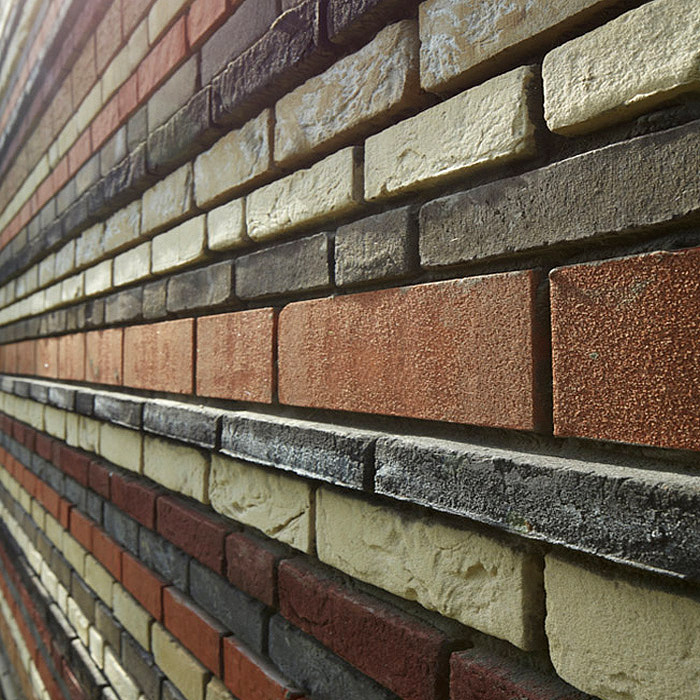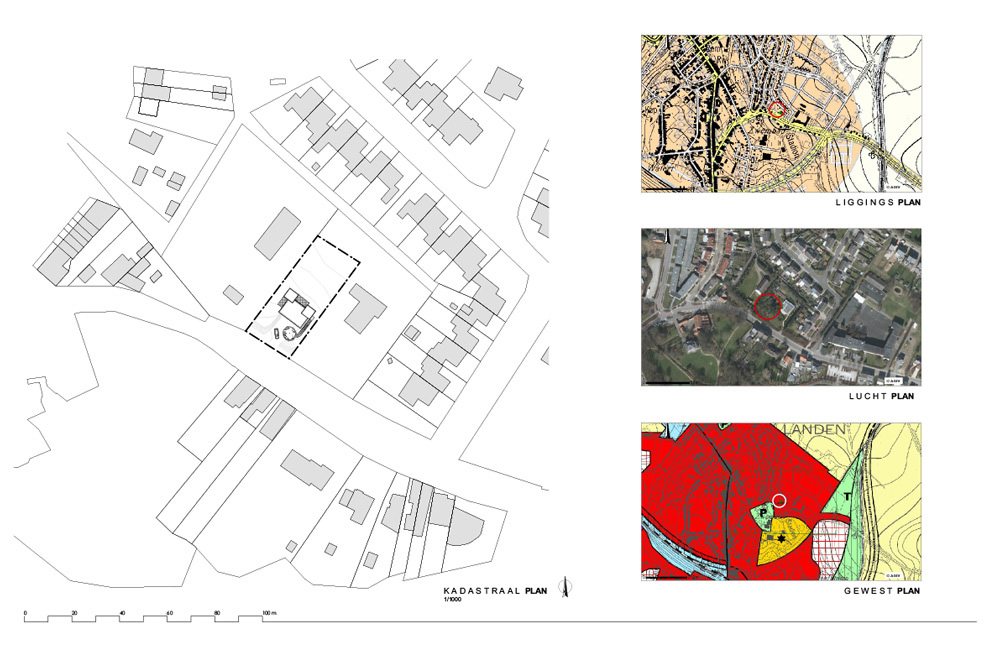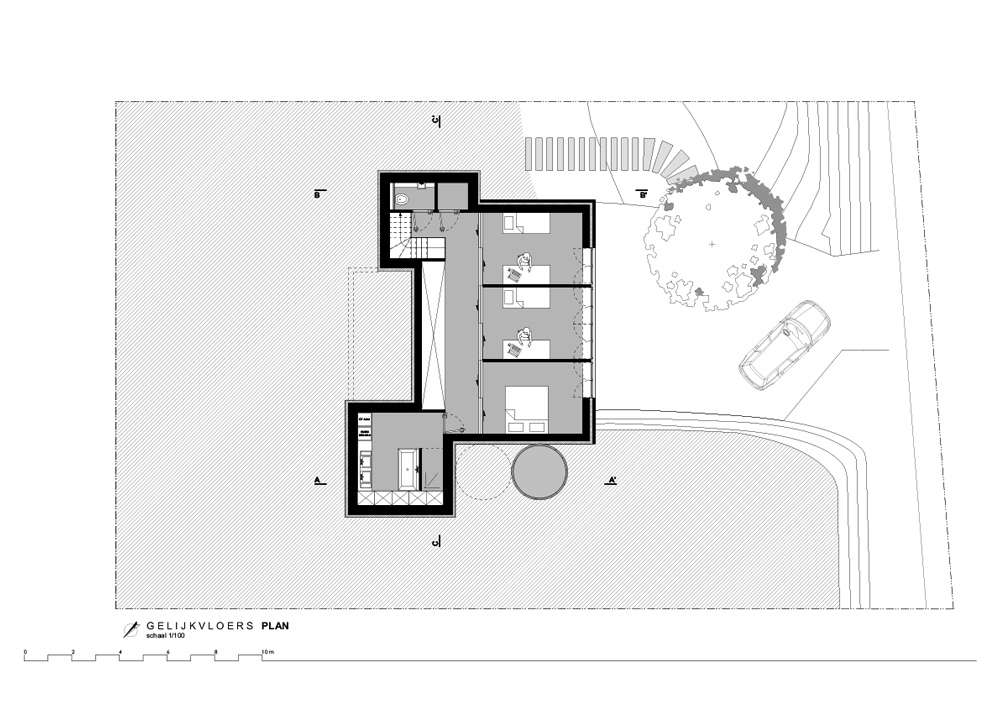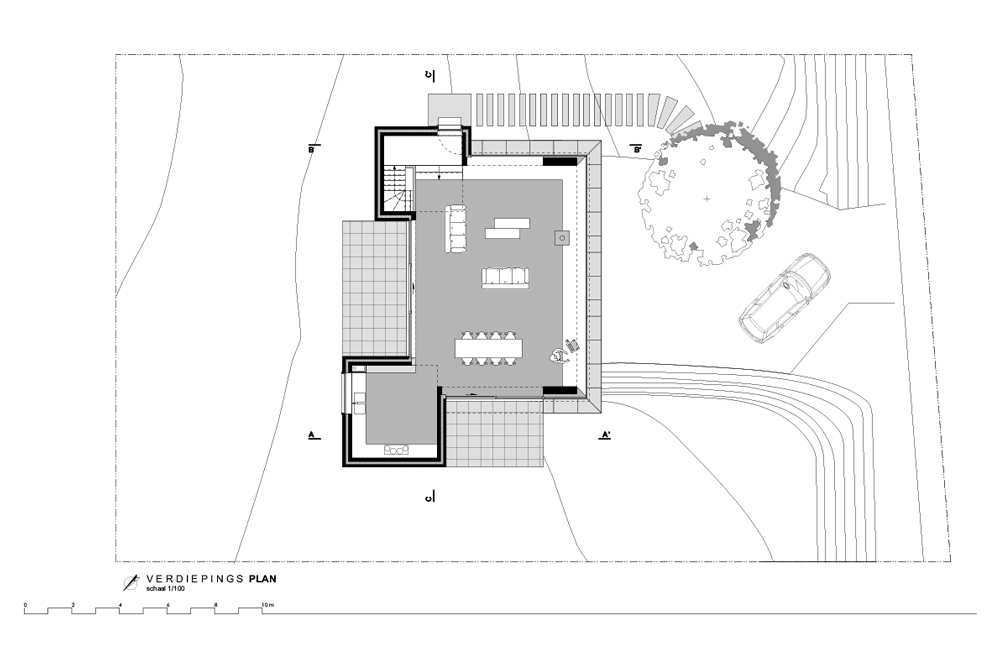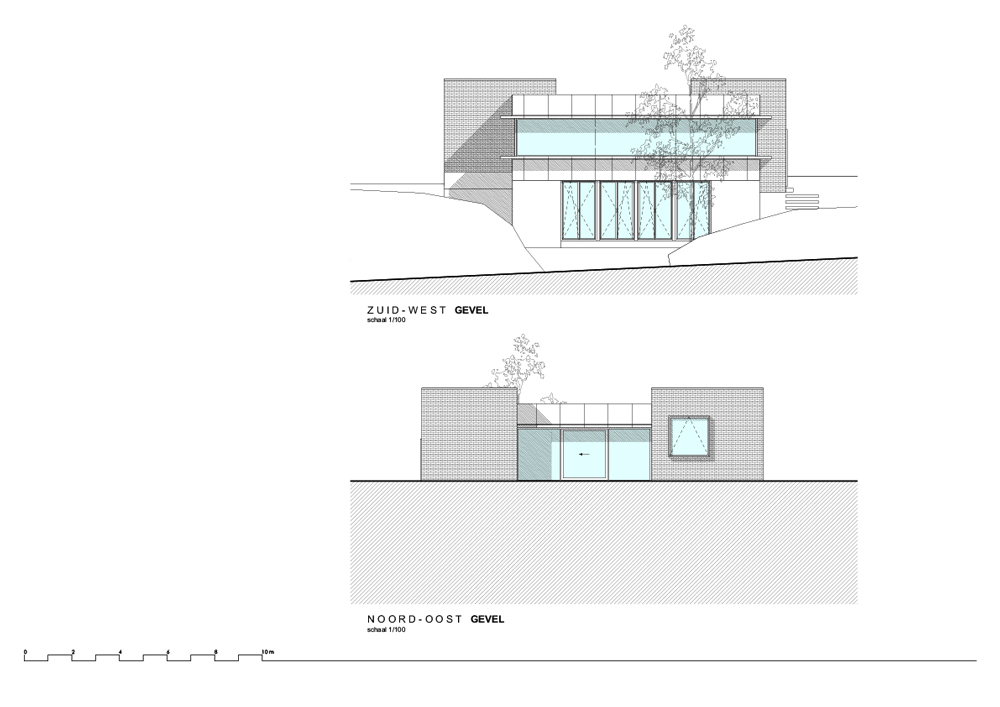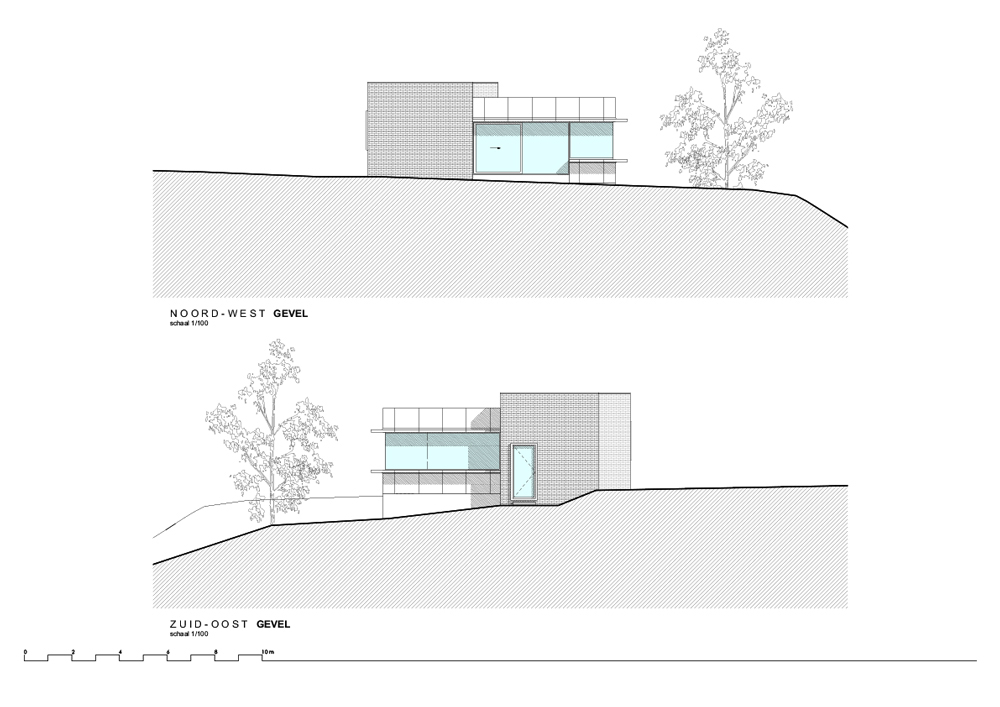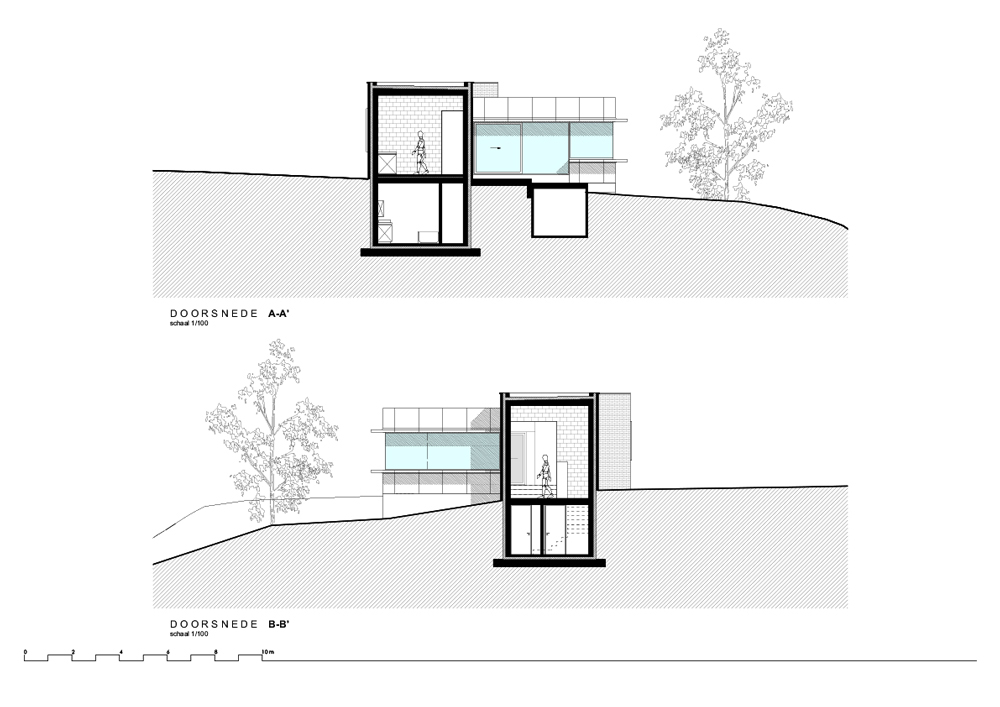Woning Landen / AST 77
Woning Landen / AST 77
Description
Brutalistic concrete house with softly bricked stone cores.
The design of the house starts from the characteristics of the place, combined with the specific needs and wishes of the client. Despite the generous available space, which has been furnished as a garden of the parental home, there was vigilance about the lavish completion of this plot. The house has been realized in a setting of front gardens and municipal parks, where it can be an addition to the two underlying homes, but can also function perfectly on its own in the steep slope of limestone and marl layers.
Because of the park-like setting and the overdimensioned front gardens, the secure location of the house still maintains maximum openness between the public domain (park, street) and the various private gardens. The typology of a pavilion at garden level was made possible by realizing part of the program underground. Here the more intimate spaces get their quality by digging out the front area behind the roadside and as a sheltered patio. This front area acts as a transition zone to the house and also resolves the parking location.
The experience of the house itself, despite the sober floor plans, is very layered and varied. The open living space is the heart of the home that maximally accommodates the properties of the plot and the surroundings. On the one hand you have the panoramic view of the Molenbergstraat and the Rufferdinge park. On the other hand, there are the more framed views on different parts of the private garden. The living space has an outward view in the four directions, which is more a characteristic feature of a pavilion typology than of a dwelling. The kitchen and the vertical circulation are hidden in the two closed cores and ensure that privacy is guaranteed to the surrounding buildings. This reinforces the effect of the park environment.
The ground floor has a completely different quality, which is more intimate and layered. Shelters and sanitation facilities have been organized to the rear zone. In the front zone, the bedrooms have been designed with a strong relationship to the intimate outdoor space yet to be constructed.
The house is built with atypical industrial building materials. Especially the highly reflective glass windows and the (prefabricated) concrete retaining wall elements give the house a brutalistic appearance to the public domain. On the north and garden side, the closed cores are rather soft and tactile. One of the most striking eccentric features of this house is perhaps the use of different recuperation bricks. The two cores are covered with this and form a thick warm winter winter sweater, referring to the vertical line patterns of Paul Smith.
Motivation
Which building did the builder want to realize?
The client wanted a budget-friendly home with a rough but solid finish. Where they can live as a family, just outside the core of the city of Landen, between the green of the existing front yard and the adjacent Rufferdinge park.
How did the client want to live?
In the first discussions the housing requirements were not very clear and the client was open to a creative housing typology that might be a bit atypical for Flanders, but where they can feel at home with the family
What were the characteristics of the terrain?
The terrain or rather "the building plot on the slope" has much more potential than just an everyday front yard. The often too large, and in this case south-oriented, front gardens have the possibility to develop a further densification of the residential center in Landen without losing the open character of this city.
What did you attract in the building ground?
The duality between the park, the front garden and the various extreme height differences. On the other hand, the search for contemporary solutions for the typical parcel plots that often have wrong spatial relationships.
What is your vision on housing?
With our architecture, we try to design a flexible tailor-made suit for the users of the buildings. This means that we do not want to make clothing or wedding suits. These are too limited in their time and use. The flexible tailor-made package must offer an answer to the spatial quality of both the built-up and the non-built environment. Sustainability is not a matter of material or system choice alone. Sustainability for buildings with a lifetime of several generations is primarily to ensure flexibility and integration in the development of the environment as a whole. Unfortunately, it is inevitable that building is taxing the environment.
But how can a design ensure that these negative consequences are kept to a minimum and the positive experience is further optimized?
Perhaps integral quality is therefore a more accurate term than "sustainable construction". Integration refers to a dynamic combination of the different aspects that relate to the entire design and construction process. It points to an optimal combination of the situation, the control of the climate by building and installation and the required use of raw materials in the form of materials and energy. The vision on the time / economy factor, the value and sustainability of the resources used in the short and long term is also important to take into account in the design process.
What can you tell us about the room layout of the house?
The layout of the house is rather simple and compact for the individual secondary functions, but spacious and generous for the common living functions. The 360 ° open floor plan of the living space with view in the four directions ensures that the house is flooded with daylight throughout the day and that the surroundings are absorbed as much as possible.
What is specific about this project?
As mentioned earlier, it is not merely the materialization of the façades, but rather the redefinition of the allotment plots in the residential centers of our villages and towns. The commitment to use a typological residential pavilion or bungalow offers a different perspective than the well-known residential or urban villa buildings.
How has the use of materials been handled?
Bringing together previously hard, cold façade materials, such as the concrete retaining wall elements and the highly reflective windows, are absorbed with soft, warm façade materials, such as the recycled facing bricks. These offer the home a layering of experience and texture, and provide a synthesis between the cold brutalist look and the decorative decoration.
How did you try to make 'living' as pleasant as possible?
The living qualities mainly focus on the interactions that arise between the different views and lights. What makes this house different from standard living and offers an answer in a contemporary way to the great complexity of the Flemish land development context and the increasingly restrictive legislations.



